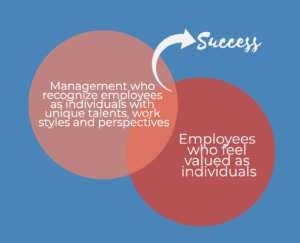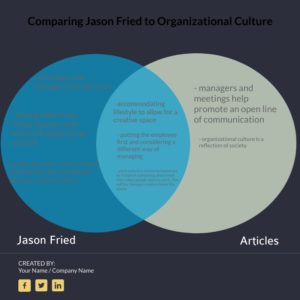The author of my article is named Aaron Hicks, and he, with the help of four individuals who he acknowledged from the University of Richmond, published “Religion and the Workplace : Pluralism, Spirituality, Leadership.” Aaron is a professor with an undergraduate degree and graduate coursework in economics, a Master of Divinity degree, and a Ph.D. in religious studies. The author’s religious tradition is Presbyterian (Protestant, Christian). Before he began writing Chapter 1 of this book, Aaron clarified his opinion to the reader by stating how faithful Christians should have no interest in imposing their beliefs or practices upon others and they should want to receive no advantage in public life or the workplace because of their religion. “Religion and the Workplace: Pluralism, Spirituality, Leadership” is structured into 3 parts, where I will be writing about Part 2 (Chapters 5-7). The author’s objective in this section of the text is to offer distinctions, concepts, and comparative examples that demonstrate how religion is present in contemporary workplaces. The audience of this text includes scholars in favor of secular workplaces and supporters of spiritual leadership and Christian preferences because they will be actively challenged in their beliefs, but the audience also includes individual employees of any religion, or those who do not identify as religious or spiritual.
Aaron’s purpose is to analyze current realities in the workplace in relation to religion and spirituality, and he does so by first pointing out how individual and institutional expressions of religion differ. That is, most approaches to religion and spirituality in the workplace often underemphasize religious diversity. Religion in the workplace is often seen as religion of the workplace, and the author makes an important point that the corporate leader cannot play the role of a spiritual guide or guru to his or her workforce. If a single company sponsors or promotes one specific kind of religion, this is questionable. One quote by the author which supports his reasoning and argument on why companies can’t openly express one religion over any other is “It may be easy for Christians to downplay the significance, for example, of subtle messages in the workplace that convey the privileged status enjoyed by Christian symbols, ideas, or holidays, but for Jewish, Muslim, and atheistic co-workers these messages are overtly present and reinforce their experience of marginalization.” (Hicks, 2003, p. 133) Additionally, public life impacts the workplace as the article explains. Religion plays many roles in American society, and many employees who are Christians have admitted that they receive or have received preferential treatment at work and in society. These current discussions of spirituality tend to marginalize those who are atheists or adherents of many religious backgrounds, causing those who feel pressured by society to divorce their religious / spiritual commitments from all aspects of their public lives.




